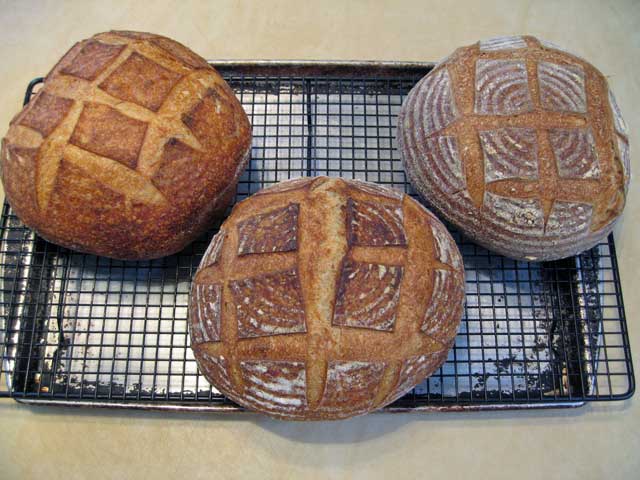Pain Allemande aux Fruits
This weekend's baking included Bernard Claytons Pain Allemande aux Fruits. It's a marvelously fragrant bread, containing lemon zest, orange juice, anise seed, cinnamon, figs, raisins, apricots, prunes, almonds, hazelnuts, butter and other good things. I made a double batch, since I tend to make a mess in the process of getting everything prepped. Might as well have four loaves for my efforts as two, right? Plus, I can give some for gifts and still have some for myself.
- Log in or register to post comments
- 5 comments
- View post
- pmccool's Blog

 [/center]
For a recent dinner featuring shrimps in Pernod, there was special request for the bread to be made WITHOUT using my wild yeast. So I fell back on one of our favourites from Maggie Glezer's book Artisan Baking Across America: Acme's Rustic Baguettes. On first reading, the recipe seems a little complicated with its double preferment but it is almost fool proof. And it's NOT sour. Not even remotely.
[/center]
For a recent dinner featuring shrimps in Pernod, there was special request for the bread to be made WITHOUT using my wild yeast. So I fell back on one of our favourites from Maggie Glezer's book Artisan Baking Across America: Acme's Rustic Baguettes. On first reading, the recipe seems a little complicated with its double preferment but it is almost fool proof. And it's NOT sour. Not even remotely.